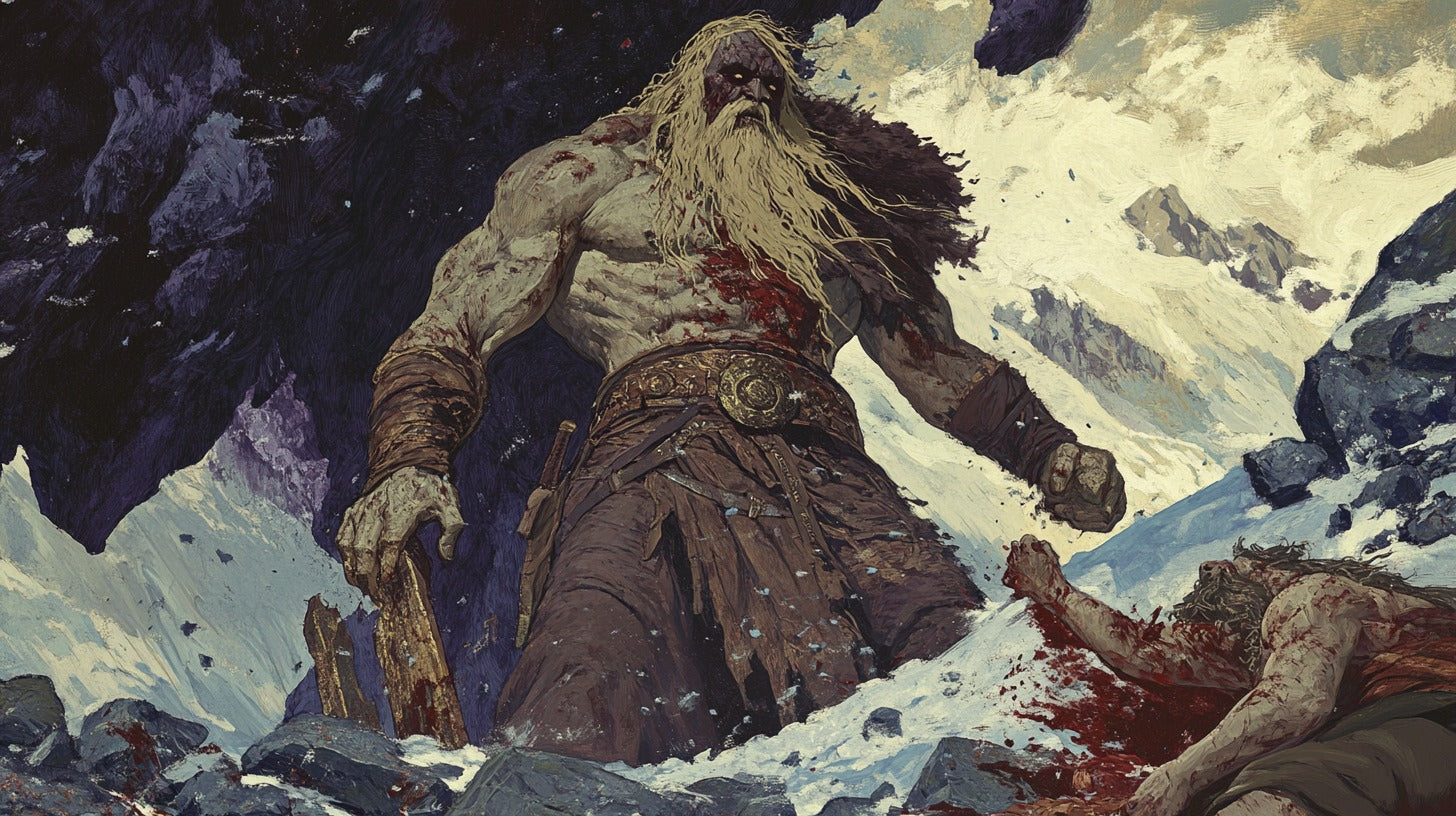
The Cosmic Wolves of Norse Mythology: Sköll and Hati
In Norse mythology, Sköll and Hati stand as two of the most enigmatic figures in the pantheon, representing the eternal chase of celestial bodies across the heavens. These cosmic wolves, whose pursuit of the sun and moon has captured imaginations for over a millennium, remain central to our understanding of Norse cosmology and religious thought.
Origins and Etymology
The primary attestation of Sköll and Hati comes from the Grímnismál, a poem in the Poetic Edda, composed in approximately the 13th century but believed to contain much older oral traditions. The names first appear in written form in manuscripts dating to the 1270s, though linguistic evidence suggests their stories existed in oral form centuries earlier.

The Wolves Pursuing Sól and Máni by J. C. Dollman, 1909
Linguistic Analysis
The name Sköll derives from Old Norse, meaning "treachery" or "mockery," while Hati Hróðvitnisson (meaning "He Who Hates" or "Enemy") carries the patronymic indicating his relation to Hróðvitnir (another name for the great wolf Fenrir). These etymological roots provide insight into their perceived roles within Norse mythology.
Mythological Roles
Sköll's primary role in Norse mythology is the pursuit of Sól, the sun goddess, across the daily sky. According to the Prose Edda, compiled by Snorri Sturluson around 1220 CE, Sköll's chase creates the movement of the sun across the heavens, establishing the daily cycle of light and darkness.
Hati, also known as Mánagarðr ("Moon-Destroyer"), pursues Máni, the moon god. The varying phases of the moon were attributed to Hati's proximity to his quarry, with lunar eclipses representing moments when he drew particularly close to his prey.

Sól and Máni's Bane - Sköll & Hati Arm Ring
Cultural Significance
Within Norse religious practice, Sköll and Hati represented more than mere explanations for celestial movements. They embodied the constant threat to cosmic order, playing crucial roles in Norse eschatology, particularly in the events of Ragnarök, when they were prophesied to finally catch and devour their prey.
Archaeological Evidence
While direct archaeological evidence of Sköll and Hati worship remains limited, several runestone carvings from the Viking Age (793-1066 CE) depict wolf figures in pursuit of circular objects, potentially representing these cosmic wolves. Notable examples include findings from Gotland and eastern Sweden.
Literary Analysis
The Poetic Edda provides our most detailed accounts of Sköll and Hati. In Grímnismál, stanza 39 explicitly names them:
"Sköll is the name of the wolf
Who follows the shining priest
Into the desolate forest,
And the other is Hati,
Hróðvitnir's son,
Who chases the bright bride of heaven."
Later Medieval Interpretations
Medieval Icelandic manuscripts, particularly those from the 13th and 14th centuries, expanded upon these earlier sources, providing additional context and interpretation. The Prose Edda elaborates on their roles within the broader cosmic framework of Norse mythology.
Modern Interpretations
Contemporary scholars have interpreted Sköll and Hati as metaphors for natural phenomena, with some suggesting their stories reflect ancient Nordic observations of solar and lunar eclipses. Others propose connections to prehistoric Germanic wolf cults.
Cultural Impact
The enduring influence of Sköll and Hati extends into modern popular culture, appearing in various forms of media, literature, and art. Their story continues to inspire contemporary interpretations of Norse mythology.
Frequently Asked Questions (FAQs)
- Were Sköll and Hati actually brothers?
The sources are unclear on their exact relationship, though both are associated with Fenrir, either as sons or close kin.
- What happens to Sköll and Hati during Ragnarök?
According to prophecy, they succeed in catching and devouring the sun and moon during Ragnarök.
- Are there similar wolves in other mythologies?
While celestial-chasing wolves are somewhat unique to Norse mythology, other cultures have similar cosmic predator myths.
- How were Sköll and Hati worshipped?
Direct evidence of specific worship practices is limited, though they likely featured in broader Norse religious observations.
- What is the oldest known reference to these wolves?
The earliest written references date to the 13th century, though the oral traditions are believed to be much older.









